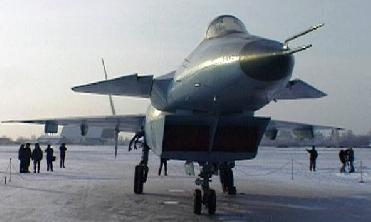
An artist's concept of NASA's Orion crew exploration vehicle in lunar orbit. Image Credit: NASA
HOUSTON (BNS): NASA, which is developing a heat shield to protect its Orion crew module, has zeroed in on the Avcoat ablator system as the material to build the thermal protection system.
The material, which will be used in the heat shield, will protect a new generation of space explorers when they return from the moon, NASA said in a statement on Tuesday.
Orion is part of the Constellation Programme that is developing US’s next-generation spacecraft system for human exploration of the moon and further destinations in the solar system. The Orion crew module, which will launch atop an Ares I rocket, is targeted to begin carrying astronauts to the International Space Station in 2015 and to the moon in 2020.
The spacecraft will face extreme conditions during its voyage to the moon and on its journey back home. On the blistering return through Earth's atmosphere, the module will encounter temperatures as high as 5,000 degrees Fahrenheit. Heating rates may be up to five times more extreme than rates for missions returning from the ISS, according to NASA.
The spacecraft’s heat shield, a dish-shaped thermal protection system at its base, will endure most heat and will erode, or “ablate,” in a controlled fashion, transporting heat away from the crew module during its descent through the atmosphere, the space agency said.
To protect the flight and its crew from such severe conditions, the Orion Project Office at NASA's Johnson Space Center in Houston had entrusted a team with the task of developing the thermal protection system, or TPS, heat shield. The team had identified eight different materials for the purpose and finally chose Avcoat which has proven its success in previous space missions.
The material was used for the Apollo capsule heat shield and on select regions of the space shuttle orbiter in its earliest flights. Made of silica fibers with an epoxy-novalic resin filled in a fiberglass-phenolic honeycomb, Avcoat is manufactured directly onto the heat shield substructure and attached as a unit to the crew module during spacecraft assembly.
Several tests, including rigorous thermal, structural and environmental testing, were conducted to prove the efficiency of the material, NASA said.
“The biggest challenge with Avcoat has been reviving the technology to manufacture the material such that its performance is similar to what was demonstrated during the Apollo missions," said John Kowal, Orion's thermal protection system manager at Johnson. “Once that had been accomplished, the system evaluations clearly indicated that Avcoat was the preferred system.”
In partnership with the material subcontractor, Textron Defense Systems of Wilmington, Lockheed Martin will continue development of the material for Orion. While Avcoat was selected for the purpose, more research is needed to integrate it completely into Orion's design, NASA stated.
 Previous Article
Previous Article Next Article
Next Article













The Indian Air Force, in its flight trials evaluation report submitted before the Defence Ministry l..
view articleAn insight into the Medium Multi-Role Combat Aircraft competition...
view articleSky enthusiasts can now spot the International Space Station (ISS) commanded by Indian-American astr..
view article